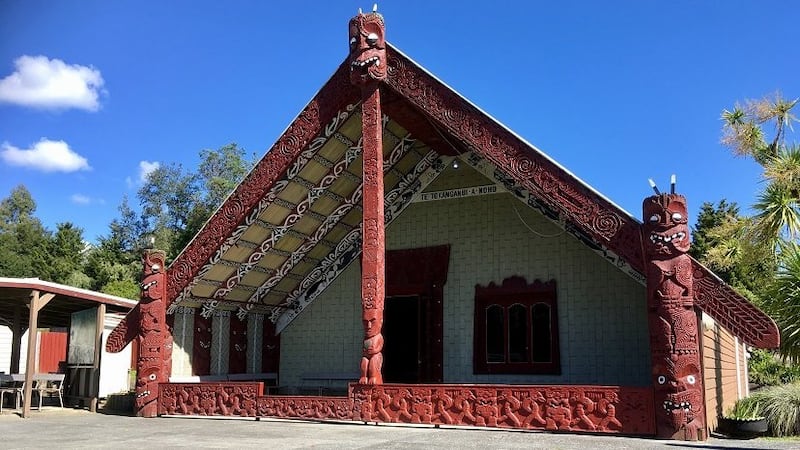This weekend brings to an end a year of hard work to prepare the signature meeting house of Ngāti Maniapoto, Te Tokanganui-a-Noho, for reopening.
The wharenui was built after the New Zealand Land Wars in 1872 as a base for the prophet Te Kooti and his Ringatū followers, who had taken refuge in Te Rohe Pōtae (King Country). Te Kooti used the house as a Ringatū Church, a whare rūnanga, whare karakia, and wharenui.
According to Te Hāhi Ringatū's spokesperson Te Kahautu Maxwell, when Te Kooti left in 1883 he gifted his first Ringatū meeting house as a gesture in return for the kindness Ngāti Maniapoto and Ngāti Rereahu had shown him and Te Hāhi Ringatū.
Te Tokanganui-a-Noho meeting house in Te Kūiti prior to closing for renovations in January 2018 - Photo / Kawe Roes
Maxwell says, "Te Tokanganui-a-Noho is the oldest meeting-house in a group of five built as part of the Te Kotahitanga Movement."
The other whare are:
Ōruataupare in Kōkōhinau, Te Teko 1882
Te Poho-o-Apanui in Maraenui 1887
Te Whai-a-te-Motu in Ruatāhuna 1888
Tānewhirinaki in Ōpekerau, Waiōweka 1888
Sir Hirini Moko Mead, of Ngāti Awa notes that the house has had many names over its lifetime. He says photographic evidence from 1899 illustrates the wharenui with a nameplate listed as Waho then Rawaho.
Mead says there is an assumption the name originally came from the meeting house Te Tokanganui-a- noho at Motakotako near Aotea Harbour, Kawhia, built and carved by Te Whanake for the iwi of Ngati Te Wehi.
However, the house was moved to Kawhia where it was burnt down about in 1890. Mead believes the name was then transferred to the meeting house in Te Kuiti.
The late Rapata Emery of Ngāti Maniapoto is quoted in a Waka Huia documentary as saying that the current name was taken from a lament by a woman called Parewhēte after she left her Ngāti Raukawa husband Wairangi for another man.
Emery said Wairangi chased Parewhēte and when he found her this was the lament she sang to warn him that he'd be killed:
He aha koe i haere mai
I te rourou iti a haere,
Te noho atu ai koe
I te tokanga nui a noho.
Oh, why didst thou come
With the small basket of the traveller,
But rather stay away
With the large basket of stay-at-home.
The implication from Parewhete was 'why didn't you stay at home where you're safe at Te Tokanganui-a-Noho'.
One hundred years after the meeting house was built, the building was painted again in 1972, inside and outside.
Since 2018 when the meeting house was closed, it has received a face lift and further restoration of the carvings.
The wharenui will be opened again to the motu this Sunday at 5am by Te Hāhi Ringatū and Ngāti Maniapoto nui tonu.

